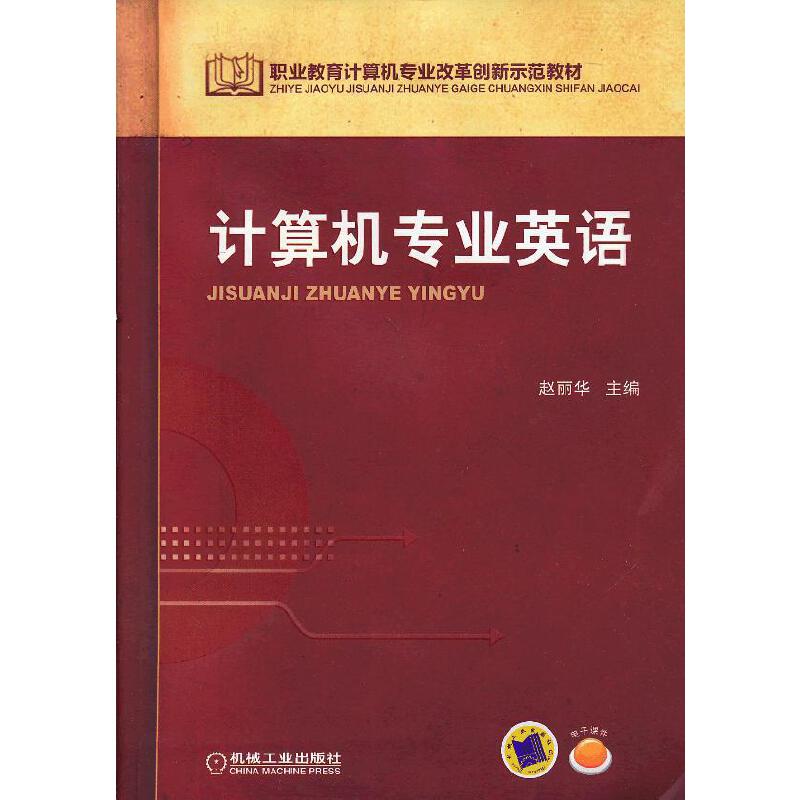计算机视觉特征提取与图像处理(第三版)(英文版) / 国外电子与通信教材系列
作者: 马克 S. 尼克松、阿尔贝托 S. 阿瓜多
出版时间:2013年2月
出版社:电子工业出版社
- 电子工业出版社
- 9787121195273
- 1-1
- 146094
- 0047151607-0
- 平装
- 16开
- 2013年2月
- 1143
- 628
- TP391.41
- 信号与信息处理
- 研究生
《计算机视觉特征提取与图像处理》可作为高等学校电子工程、计算机科学、计算机工程等专业本科生的双语教材,也可以作为图像、视频信号处理,模式识别和计算机视觉研究方向的博士生、硕士研究生,以及相关专业的科研工作者的参考用书。
Preface
About the authors
CHAPTER 1 Introduction
1.1 Overview
1.2 Human and computer vision
1.3 The human vision system
1.3.1 The eye
1.3.2 The neural system
1.3.3 Processing
1.4 Computer vision systems
1.4.1 Cameras
1.4.2 Computer interfaces
1.4.3 Processing an image
1.5 Mathematical systems
1.5.1 Mathematical tools
1.5.2 Hello Matlab, hello images!
1.5.3 Hello Mathcad!
1.6 Associated literature
1.6.1 Journals, magazines, and conferences
1.6.2 Textbooks
1.6.3 The Web
1.7 Conclusions
1.8 References
CHAPTER 2 Images, Sampling, and Frequency
Domain Processing
2.1 Overview
2.2 Image formation
2.3 The Fourier transform
2.4 The sampling criterion
2.5 The discrete Fourier transform
2.5.1 1D transform
2.5.2 2D transform
2.6 Other properties of the Fourier transform
2.6.1 Shift invariance
2.6.2 Rotation
2.6.3 Frequency scaling
2.6.4 Superposition (linearity)
v
2.7 Transforms other than Fourier
2.7.1 Discrete cosine transform
2.7.2 Discrete Hartley transform
2.7.3 Introductory wavelets
2.7.4 Other transforms
2.8 Applications using frequency domain properties
2.9 Further reading
2.10 References
CHAPTER 3 Basic Image Processing Operations 83
3.1 Overview
3.2 Histograms
3.3 Point operators
3.3.1 Basic point operations
3.3.2 Histogram normalization
3.3.3 Histogram equalization
3.3.4 Thresholding
3.4 Group operations
3.4.1 Template convolution
3.4.2 Averaging operator
3.4.3 On different template size
3.4.4 Gaussian averaging operator
3.4.5 More on averaging
3.5 Other statistical operators
3.5.1 Median filter
3.5.2 Mode filter
3.5.3 Anisotropic diffusion
3.5.4 Force field transform
3.5.5 Comparison of statistical operators
3.6 Mathematical morphology
3.6.1 Morphological operators
3.6.2 Gray-level morphology
3.6.3 Gray-level erosion and dilation
3.6.4 Minkowski operators
3.7 Further reading
3.8 References
CHAPTER 4 Low-Level Feature Extraction (including
edge detection)
4.1 Overview
4.2 Edge detection
4.2.1 First-order edge-detection operators
4.2.2 Second-order edge-detection operators
vi Contents
4.2.3 Other edge-detection operators
4.2.4 Comparison of edge-detection operators
4.2.5 Further reading on edge detection
4.3 Phase congruency
4.4 Localized feature extraction
4.4.1 Detecting image curvature (corner extraction)
4.4.2 Modern approaches: region/patch analysis
4.5 Describing image motion
4.5.1 Area-based approach
4.5.2 Differential approach
4.5.3 Further reading on optical flow
4.6 Further reading
4.7 References
CHAPTER 5 High-Level Feature Extraction: Fixed Shape
Matching
5.1 Overview
5.2 Thresholding and subtraction
5.3 Template matching
5.3.1 Definition
5.3.2 Fourier transform implementation
5.3.3 Discussion of template matching
5.4 Feature extraction by low-level features
5.4.1 Appearance-based approaches
5.4.2 Distribution-based descriptors
5.5 Hough transform
5.5.1 Overview
5.5.2 Lines
5.5.3 HT for circles
5.5.4 HT for ellipses
5.5.5 Parameter space decomposition
5.5.6 Generalized HT
5.5.7 Other extensions to the HT
5.6 Further reading
5.7 References
CHAPTER 6 High-Level Feature Extraction: Deformable
Shape Analysis
6.1 Overview
6.2 Deformable shape analysis
6.2.1 Deformable templates
6.2.2 Parts-based shape analysis
Contents vii
6.3 Active contours (snakes)
6.3.1 Basics
6.3.2 The Greedy algorithm for snakes
6.3.3 Complete (Kass) snake implementation
6.3.4 Other snake approaches
6.3.5 Further snake developments
6.3.6 Geometric active contours (level-set-based
approaches)
6.4 Shape skeletonization
6.4.1 Distance transforms
6.4.2 Symmetry
6.5 Flexible shape models—active shape and active
appearance
6.6 Further reading
6















